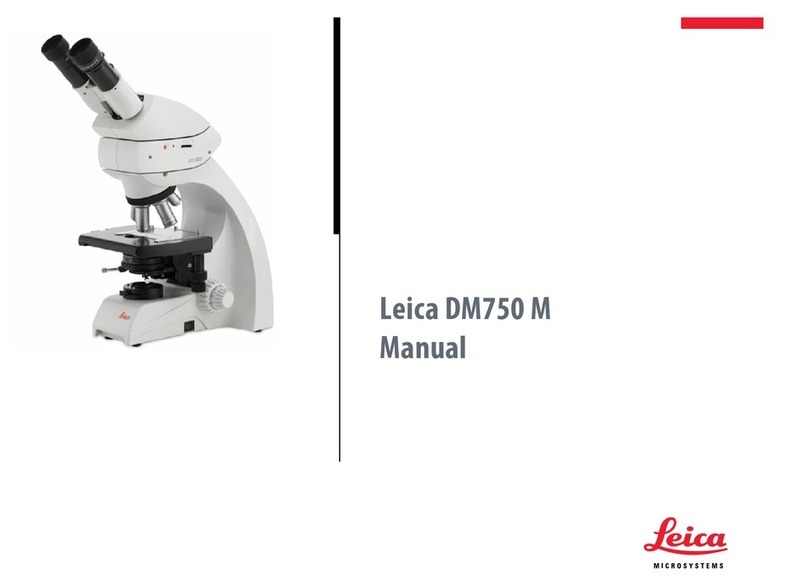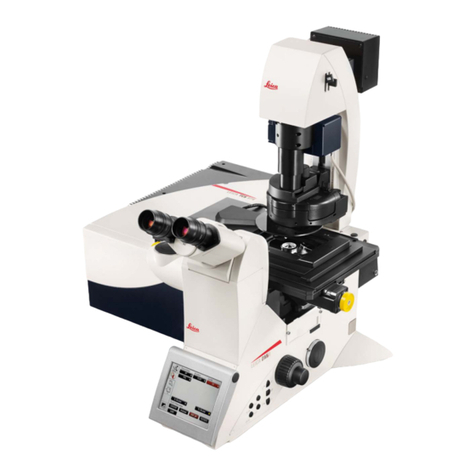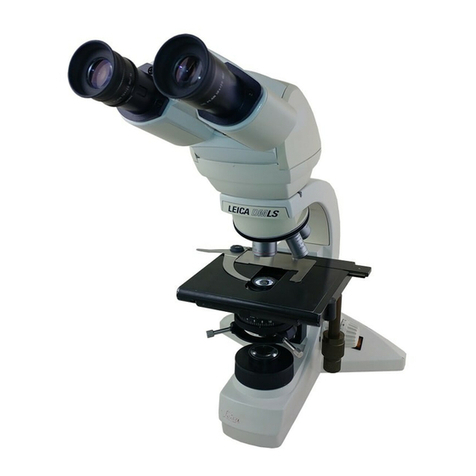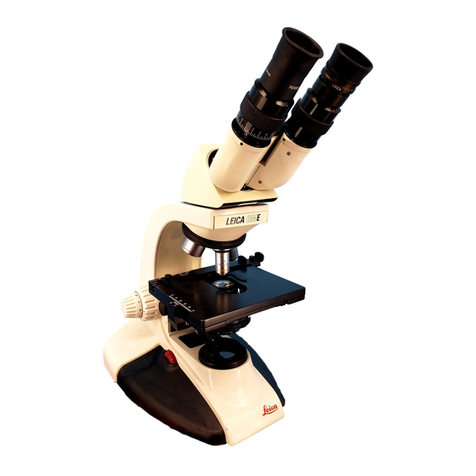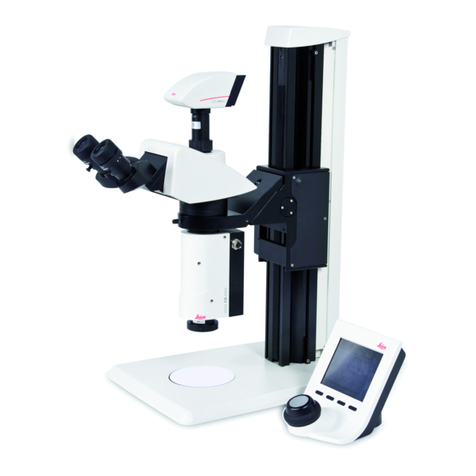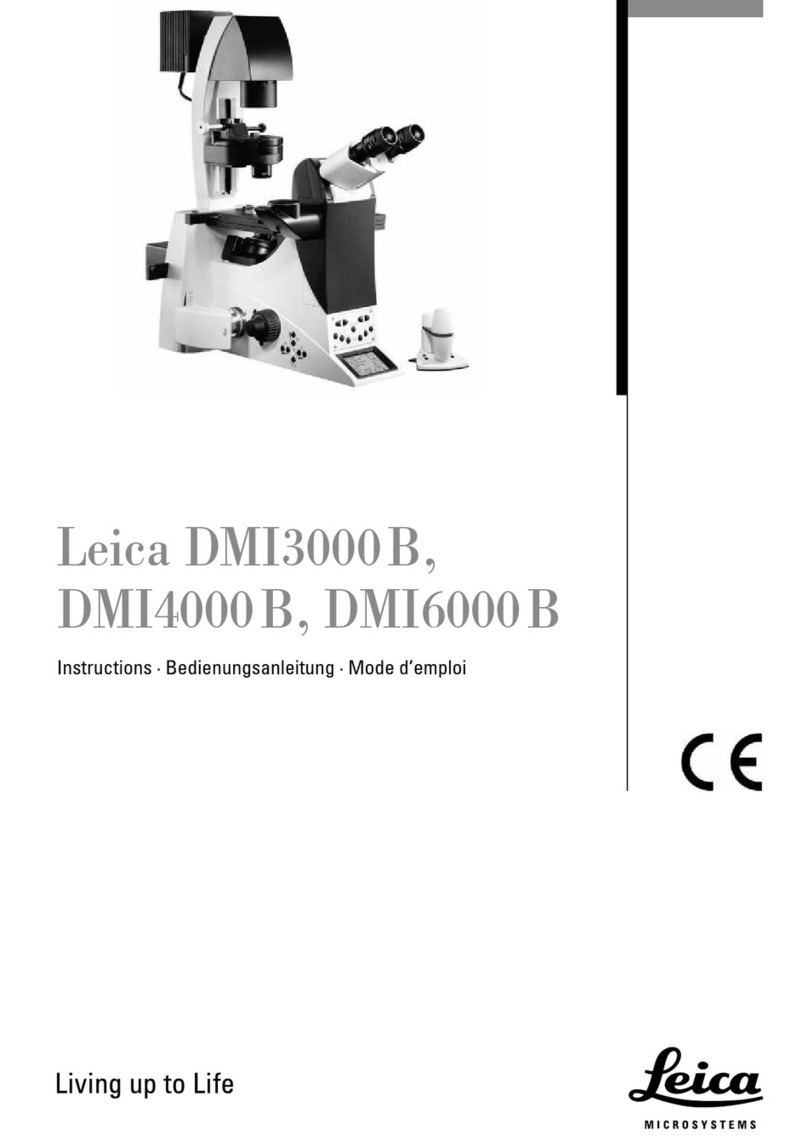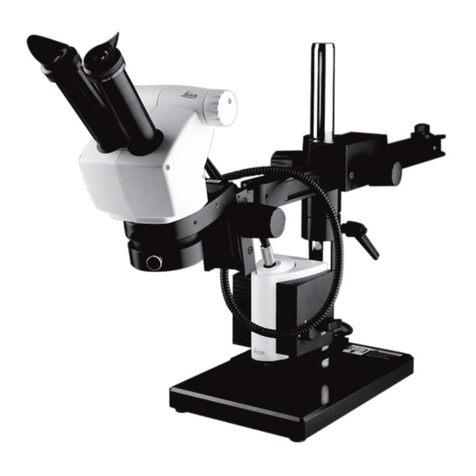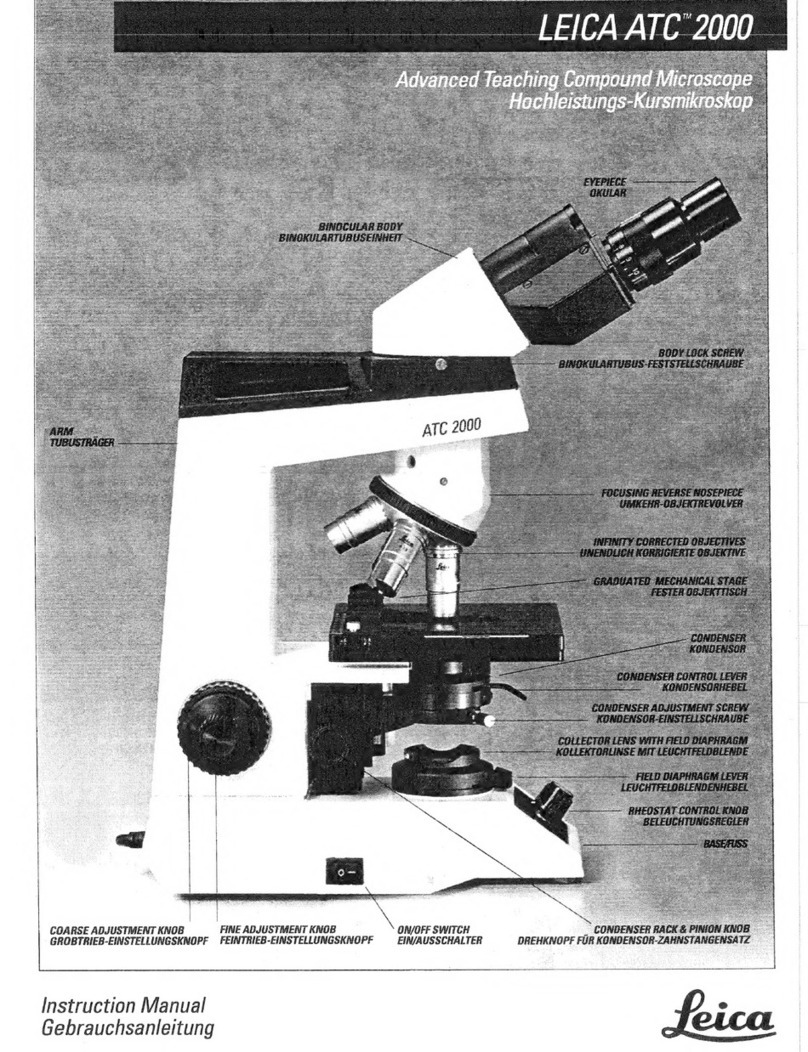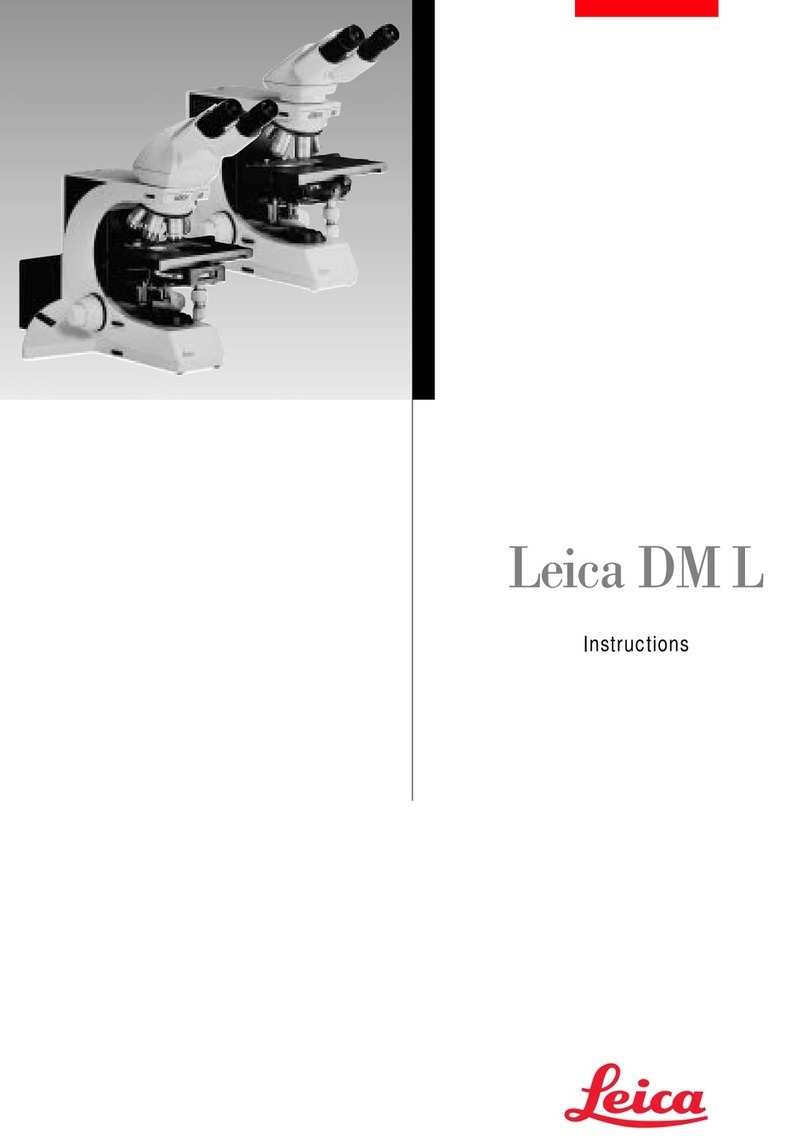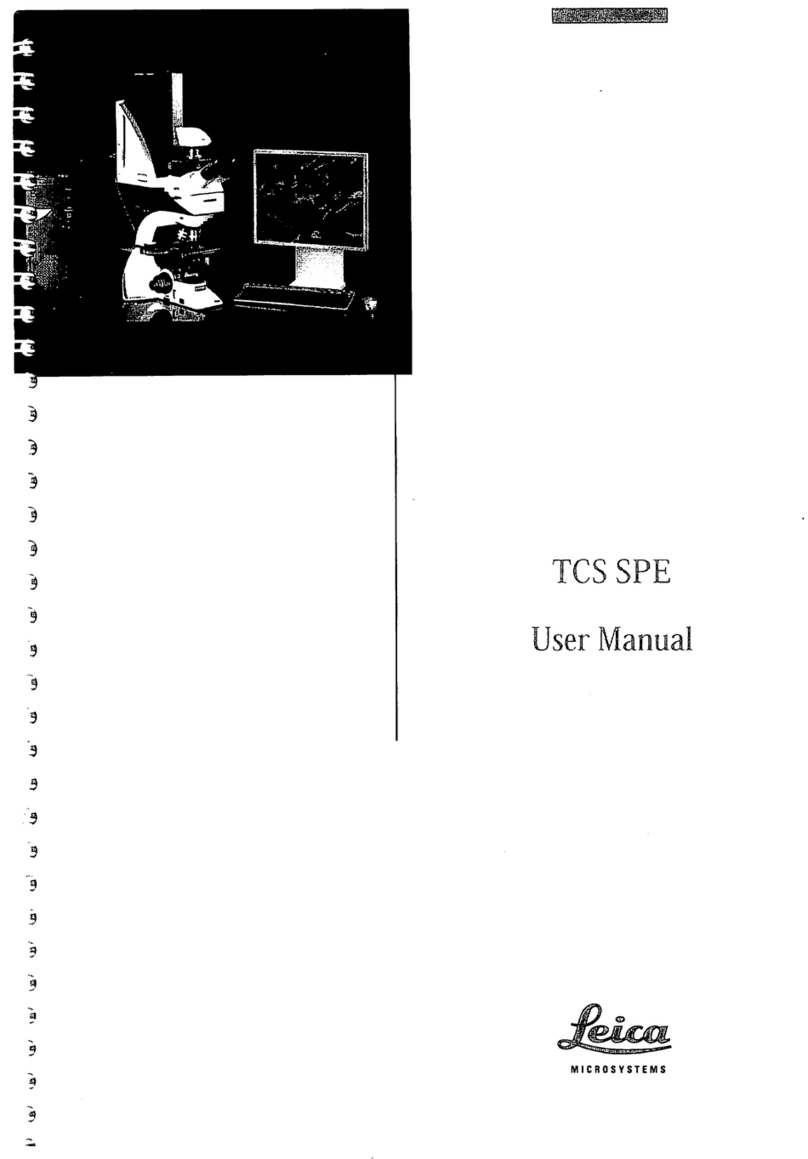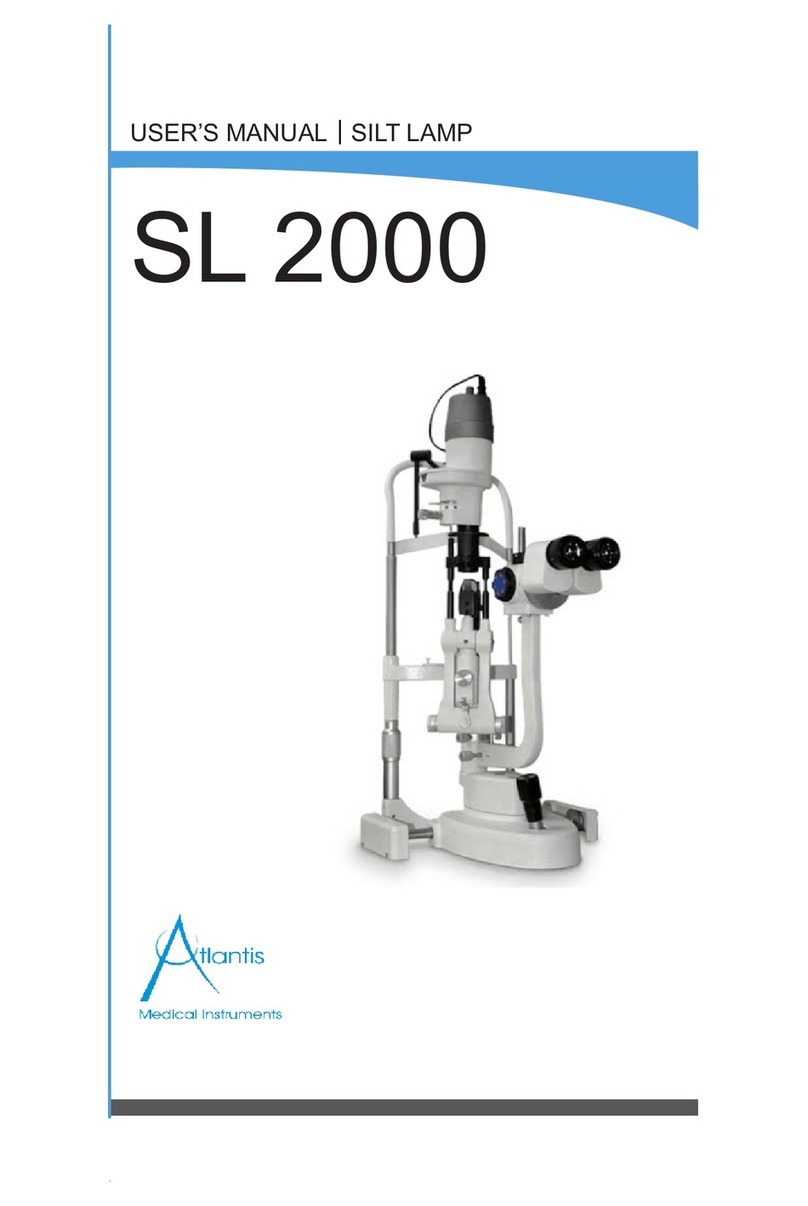5
Pol components
Components
The microscope model DMLSP (Fig. 43) differs in
the following points from the DMLS model
described on pages 5 – 51. However, all points of
the DMLS manual apply to the DM LSP as well
as long as it is equipped with the relevant com-
ponents. The following components are the only
ones that cannot be used.
●Filter magazine (Fig. 11)
●Filter holder for 2 filters (Fig. 12). For combina-
tion with IC/P polarizer (43.10) only: the similar
filter holder (43.11), although for one filter only,
should be used instead.
●Heating stages
Pol tubes
Polarization tubes have a groove on the under-
side into which a guide pin in the Pol microscope
stand and the Pol module engages, so that the
cross line in the → Pol eyepiece is oriented. For
this purpose, the right-hand eyepiece mount has
a snap-in groove and a mechanical compensa-
tion to make sure that the cross line in the eye-
piece remains oriented when the interpupillary
distance is adjusted → p. 28. The following tubes
are available, on the outside they are only slight-
ly different from the normal tubes illustrated in
Fig. 35 and 37: explanation of abbreviations
→ p. 25.
●LMP--7 Monocular Pol tube
●HC LBP 0/3/4Binocular Pol tube
●HC L1TP 4/5/7 Trinocular Pol tube with
1 beamsplitter switching position (intensity
ratio of binocular viewing port: monocular
photo/TV exit = 50 %:50%).
●HC L3TP 4/5/7 Trinocular Pol tube with
3 switching positions (intensity ration bin: ver-
tical exit 100%:0%/50:50%/0:100%).
Ordinary tubes can also be used for polarization
microscopy, although the orientation of the cross
line in the eyepiece is not then guaranteed. In
this case the disturbing bearing ring with latch in
the Pol eyepiece can be removed with a very
small screwdriver. If using additional graticules,
e.g. for photomicrography, you should order a
third eyepiece, as 2 different graticules in the left
and right-hand eyepieces are irritating.
Pol eyepieces
On polarized light microscopes like the DMLSP,
the (right-hand) eyepiece has a cross line which
is aligned by a latch and corresponding groove
in the right-hand tube. If aligned in a horizontal/
vertical position (Fig. 41/42) the crossline in-
dicates the vibration direction of the polarizer
(east – west) and the analyser (north – south). If
the crossline is set at an angle of 45°, it indicates
the vibration direction in a birefringent specimen
when it is rotated to a diagonal position (= max.
light intensity). There is also a scale for length
measurement → p. 42.
Pol module
The Pol module (intermediate tube, 43.3; 43.4) also
has an orientation (see above). It consists of:
●a switchable analyser (43.4), orientation north
– south.
●a switchable (43.3) and centerable (43.3a)
Bertrand lens for conoscopy →p. 10, with
coupled pinhole diaphragm for conoscopic
isolation of small specimen areas.

